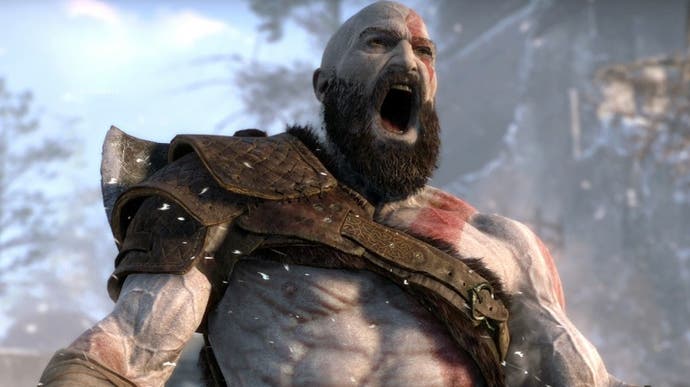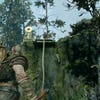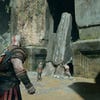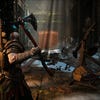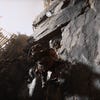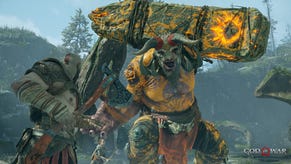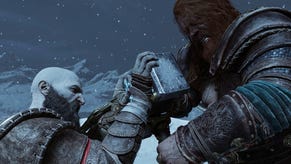God of War is PS4's next big tech showcase
Digital Foundry checks out a new slice of PS4 Pro action.
A studio with a remarkable heritage for technical excellence, Sony Santa Monica is closing in on completion of its latest God of War and this past week, we've finally had the opportunity to see more of the game in action via PlayStation 4 Pro's pristine 4K video output. Right away, it's clear that what's on display here is extremely promising. God of War should comfortably stand alongside the likes of Uncharted 4 and Horizon: Zero Dawn when it comes to the quality of its technology.
For this latest round of God of War marketing, we managed to get hold of a high quality 4K feed of the new batch of gameplay. Like Horizon, God of War is using a form of checkerboard rendering to reach a 2160p pixel count. It certainly looks clean in motion, and while our pixel counts revealed nothing other than a 2160p output, the PlayStation Blog reveals that dynamic resolution scaling is in effect.
Based on the 16 minutes of footage we had to check out, the image looks sharper than Horizon and the occasional checkerboarding artefacts are visible if you look closely and very selectively. Indeed, we had to spend a few minutes eyeballing various frames before calling it, which suggests that that development team has been very successful in delivering a sharp presentation. Although not native as such, it still looks beautiful on an ultra HD screen and by our reckoning, this is shaping up to be one of the cleanest 4K games available on the platform.
If you look beyond the basic rendering resolution however, there is much more to appreciate, and this should come as no surprise. After all, Sony Santa Monica is well known for its graphical prowess - while the original games were impressive on PlayStation 2, the two sequels released on PS3 are a significant leap in terms of visual quality and remain among the best-looking last generation games. With God of War 2018, that trend continues. This is the first time we've seen the series properly represented on current generation hardware and it shines.
The first element that stands out is the quality of individual assets. Kratos himself is extremely detailed and beautifully shaded, with lots of fine detail across his clothing and accessories. The various characters are similarly detailed and consistent in quality throughout the footage we have. On top of that, the world itself is extremely cohesive with visual elements working together to create something natural yet fantastical. There is clear evidence that we're looking at a full physically-based rendering workflow, as materials do appear highly realistic - but it's also likely that the art has been modified to fit the more stylistic approach embraced by the team. It's reminiscent of the recent Shadow of the Colossus remake in that sense and it works brilliantly.
Another impressive visual feature on display are the particles. Likely to be GPU-driven, God of War features tastefully done pyrotechnics throughout the combat-oriented action we took a look at. Early in the system's life, games like Infamous Second Son impressed us with their particle effects but most developers show more restraint in using them. It's nice to see Sony Santa Monica leaning into these effects in a big way as it fits the style of action on display. Other physics interactions also impress: cloth flows naturally, and objects break apart realistically. Granted, these objects disappear just as quickly but it's still well-implemented and almost recalls the days of rolling through barrels in Dark Souls.
Then there is the volumetric lighting. God of War leans heavily on volumetric effects to help build atmosphere. Dense fog and piercing shafts of light are seen throughout much of the new footage. We're not yet sure what sort of implementation we're looking at here but it's truly volumetric rather than a simple screen-space solution used for direct light shafts in many other games. The way it interacts with things like ground fog is also notable. Post-processing is also of excellent quality with robust per-object motion blur used throughout. This helps accentuate individual attacks, lending more weight to each motion. High quality motion blur has been a staple of the series since God of War 3 and it's great to see this trend continue.
But this new God of War is definitely breaking new ground for the series and the biggest revamp is in the revised camera system. The idea the team has presented is to never cut - cinematics and action flow seamlessly throughout the game with no loading screens or bespoke angles. It's almost the diametric opposite to prior games in the series. You look back at God of War 3, for instance, and the camera is shifting constantly - it works on a predefined route designed to always provide a cinematic angle of the action. This allows for some truly epic battles as the camera moves in and out in real-time.
The jump to a tighter third person camera with right stick control is interesting as it suggests that the series' larger scale scenes, if they are included at all, will need to play out quite differently. In that sense, it feels like a game of constraints - and perhaps that's exactly what the series has needed. The previous two God of War titles raised the bar so high in terms of huge, large scale battles that it feels impossible to top. Thankfully, the changes made to the core combat loop do seem to have a significant impact on the feel of the game. I always felt that the previous God of War games did a somewhat poor job with connecting player attacks with enemies. It feels as if you're just swinging the Blades of Olympus through your enemies until they die rather than directly hitting them.
The new game seems to do a much better job with this. By restricting Kratos to more realistic weapons that have a clear and obvious impact on the enemies, the animators and combat designers have managed to create something that looks more visceral, more personal. In previous games, it feels like Kratos is always fighting large crowds but this time, it feels like each enemy is more dangerous. Whether this remains as the basis for the entire game or whether we're just seeing a tiny sampling of the overall combat system remains to be seen - but regardless, it's all looking very impressive and we're looking forward to really putting the game through its paces closer to its April release date.
